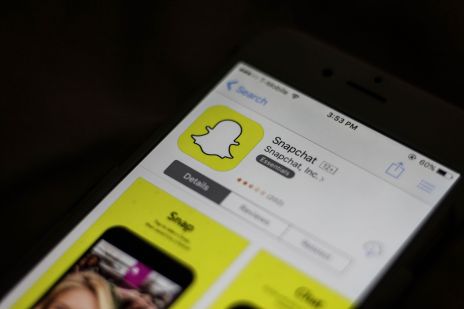“Delete snapchat? Oh god no, I could never,” sophomore early and special education major Lili Ayllon said.
Many other young adults like Lili that have downloaded Snapchat to their iPhone or Android since its creation five years ago have adapted to the idea of it being a necessity in their lives.
Created by three Stanford University students, this instant messaging and multimedia mobile application serves the main purpose of allowing users to communicate using temporary images or private messages, otherwise known as “snaps.”

As if that is not appealing enough to those of our generation, for three years now, users have also been able to compile “snaps” into a chronological storyline that all of their friends can view; this is called a Snapchat “story.”
Why is it that young adults of this generation would rather live without an arm or leg than live without Snapchat though? In our day in age, it is basically okay to lose an arm or leg, as long as a person gets it on their snap story for all their “friends” to see.
“I mainly use Snapchat to communicate with a lot of my friends back home,” Ayllon said. “It also actually makes me really happy to see when other people are having fun in their snap stories.”
However, not all people have positive feelings when viewing their friend’s snap stories. Take Maria Connelly for example, a junior marketing major who thinks that having Snapchat increases “fomo,” one’s inner “fear of missing out.”
“If I go home from school one night because I’m sick, I go on Snapchat and see my roommates Snapchat stories hanging out and having fun without me,” Connelly said. “I don’t go to St. Joe’s in Philadelphia with all of my best friends from high school, but I still see all of their Snapchat stories at school together, again, having fun without me.”
Like Connelly, Grace Griffaton, a recent communication and mass media graduate from La Salle University, also felt as if Snapchat intensified her “fomo.”
“I found myself endlessly clicking through Snapchat on Friday nights, wishing I were with those people posting pictures and videos,” Griffaton said. “I found myself thinking… Did I miss the memo on the fun, awesome, cool, hip, trendy hangout?”
This can be especially true at a smaller school like Cabrini, where a football team and large party scene are non existent. We are no Penn State.
Nine out of ten times though, Janis Ian nailed it on the head in Mean Girls, before Snapchat was even created. People really only want to make it look like they are having an awesome time, drinking their awesome shooters, listening to awesome music, and sitting around soaking up eachothers awesomeness.
In addition to having the inner need to watch every awesome Snapchat story on one’s feed, Snapchat users also have a mental bind to maintaining “snap streaks” with their friends. A Snapchat “streak” occurs when a user and their friend snapchat each other for a number of consecutive days in a row.
“Honestly, one of the main reasons why I couldn’t ever delete Snapchat is because I’m way too emotionally invested in my streaks. I’ve had some going for over 100 days now and I don’t want to lose them,” Ayllon said.
Through the constant watching stories and over investment in streaks, Snapchat can overall make one forget that genuine face to face communication still exists. This is only scratching the surface of the mental effects that the app can have on a person though.
“It’s written in literature that we, as humans, have a chemical reaction related to dopamine and these kinds of things,” Professor Rakus, a teacher of Cabrini’s Community Engagement and Social Media course said. “The fear of missing out and the need to know if one is missing out on something important can lead to emotional or social harm.”
In fact, Connelly is a walking example of this. When already dealing with depression during her freshman year of college, she felt as if having Snapchat intensified it, as she was mentally eaten alive by the sadness of missing out on things. “I eventually downloaded Snapchat again during my sophomore year when my depression got better, but then ended up recently deleting it again this year as a junior,” Connelly said.
“Taking Snapchat off my phone has truly cleared my mind and benefited my health,” Connelly said. “I’m finally not worried about who is hanging out with who, and what everyone is doing all the time. Now I’m even more prone to not constantly check other social media outlets all the time, and actually study and hang out with friends more instead.”
In agreeance to Connelly, Professor Rakus also said, “Whether it may be through Instagram, Pinterest, texting directly, or communicating in person, there are lots of other ways to be sharing material without using Snapchat.”
According to Griffaton, “Deleting the black hole known as Snapchat can start to cure this modern, 21st century, self-absorbed ailment.”
“Deleting Snapchat was one of my best collegiate decisions, besides going to school away from home,” Griffaton said. “It’s not that Snapchat is the most awful social media platform in the world… but if social media is the devil, then Snapchat would be its henchman.”



